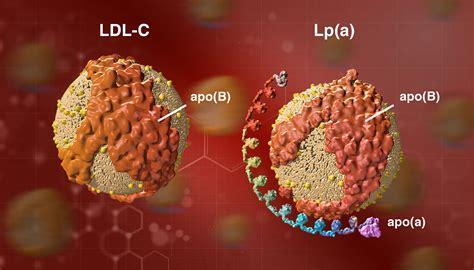
Considering new insights into the clinical management of these patients, and in the absence of FDA-approved therapies to specifically lower Lp(a) levels, the question of in whom Lp(a) should be measured has become an increasingly important issue in clinical practice.
This scientific statement updates previous recommendations of the National Lipid Association (NLA) Scientific Statement on the clinical use of Lp(a) measurement. The NLA now recommends that Lp(a) levels should be measured at least once in every adult, and this statement expands on new and emerging evidence supporting this recommendation.
New Evidence
• Data continue to accumulate from large, population-based studies indicating that elevated plasma Lp(a) is an important risk factor for atherosclerotic CVD and calcific aortic valve disease.
• The available clinical evidence allows for a more precise model of how to incorporate Lp(a) levels into clinical decision-making.
• There have been important advances in understanding of the genetic basis for variation in Lp(a) levels, and with them has come further evidence for the causality of elevated Lp(a) in CVD
STATEMENT
Since the 2019 National Lipid Association (NLA) Scientific Statement on Use of Lipoprotein(a) in Clinical Practice was issued, accumulating epidemiological data have clarified the relationship between lipoprotein(a) [Lp(a)] level and cardiovascular disease risk and risk reduction.
Therefore, the NLA developed this focused update to guide clinicians in applying this emerging evidence in clinical practice.
We now have sufficient evidence to support the recommendation to measure Lp(a) levels at least once in every adult for risk stratification.
Individuals with Lp(a) levels <75 nmol/L (30 mg/dL) are considered low risk, individuals with Lp(a) levels ≥125 nmol/L (50 mg/dL) are considered high risk, and individuals with Lp(a) levels between 75 and 125 nmol/L (30–50 mg/dL) are at intermediate risk.
Screening of first-degree relatives of patients with elevated Lp(a) can identify additional individuals at risk who require intervention.
Patients with elevated Lp(a)should receive early, more-intensive risk factor management, including lifestyle modification and lipid-lowering drug therapy in high-risk individuals, primarily to reduce low-density lipoprotein cholesterol (LDL-C) levels.
The U.S. Food and Drug Administration approved an indication for lipoprotein apheresis (which reduces both Lp(a) and LDL-C) in high-risk patients with familial hypercholesterolemia and documented coronary or peripheral artery disease whose Lp(a) level remains ≥60 mg/dL [∼150 nmol/L)] and LDL-C ≥ 100 mg/dL on maximally tolerated lipid lowering therapy.
Although Lp(a) is an established independent causal risk factor for cardiovascular
disease, and despite the high prevalence of Lp(a) elevation (∼1 of 5 individuals), measurement rates are low, warranting improved screening strategies for cardiovascular disease prevention.

